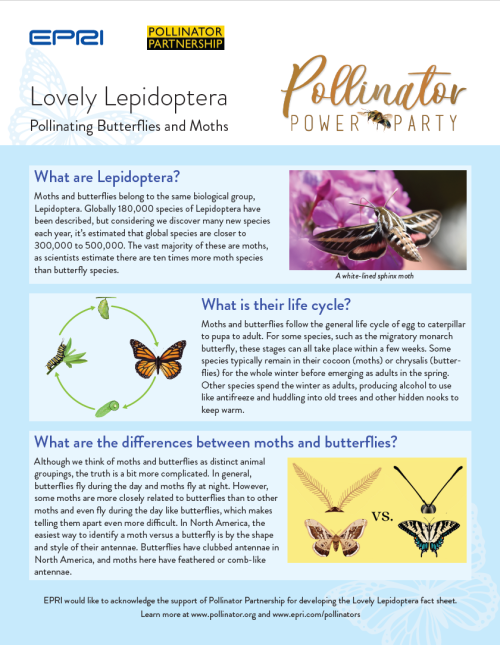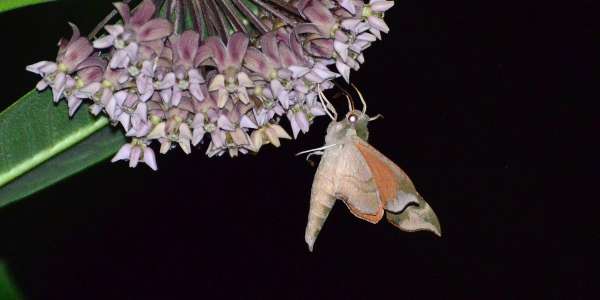Lepidoptera Task Force
The Lepidoptera Task Force is one of ten task forces associated with the North American Pollinator Protection Campaign (NAPPC). NAPPC’s mission is to encourage the health of resident and migratory pollinating animals in North America, and brings together a growing, collaborative body of more than 170 diverse partners including respected scientists, researchers, conservationists, government officials and dedicated volunteers. This task force will determine priorities and potential funding sources for a Lepidoptera research grant program including but not limited to monarch, blue, and swallowtail butterflies. The task force will also explore replication of programs such as Project Swallowtail and Project Wingspan in the Western US.
Host Plant Garden Cards
What are host plants?
Host plants play a critical role in the conservation of lepidoptera (butterflies and moths), serving as the primary food sources for the larvae (or caterpillars) of these species. Hundreds of species of lepidoptera here in North America rely on one or two specific plants (or groups [genera or families] of plants) for reproduction, meaning that if we are a bit more intentional with our plant selection, we can provide pollinating moths and butterflies with the essential plant partner they need to persist. This is especially important as habitat loss, climate change, and the proliferation of pesticides threaten moth and butterfly populations.
Monarch on milkweed by Amber Barnes
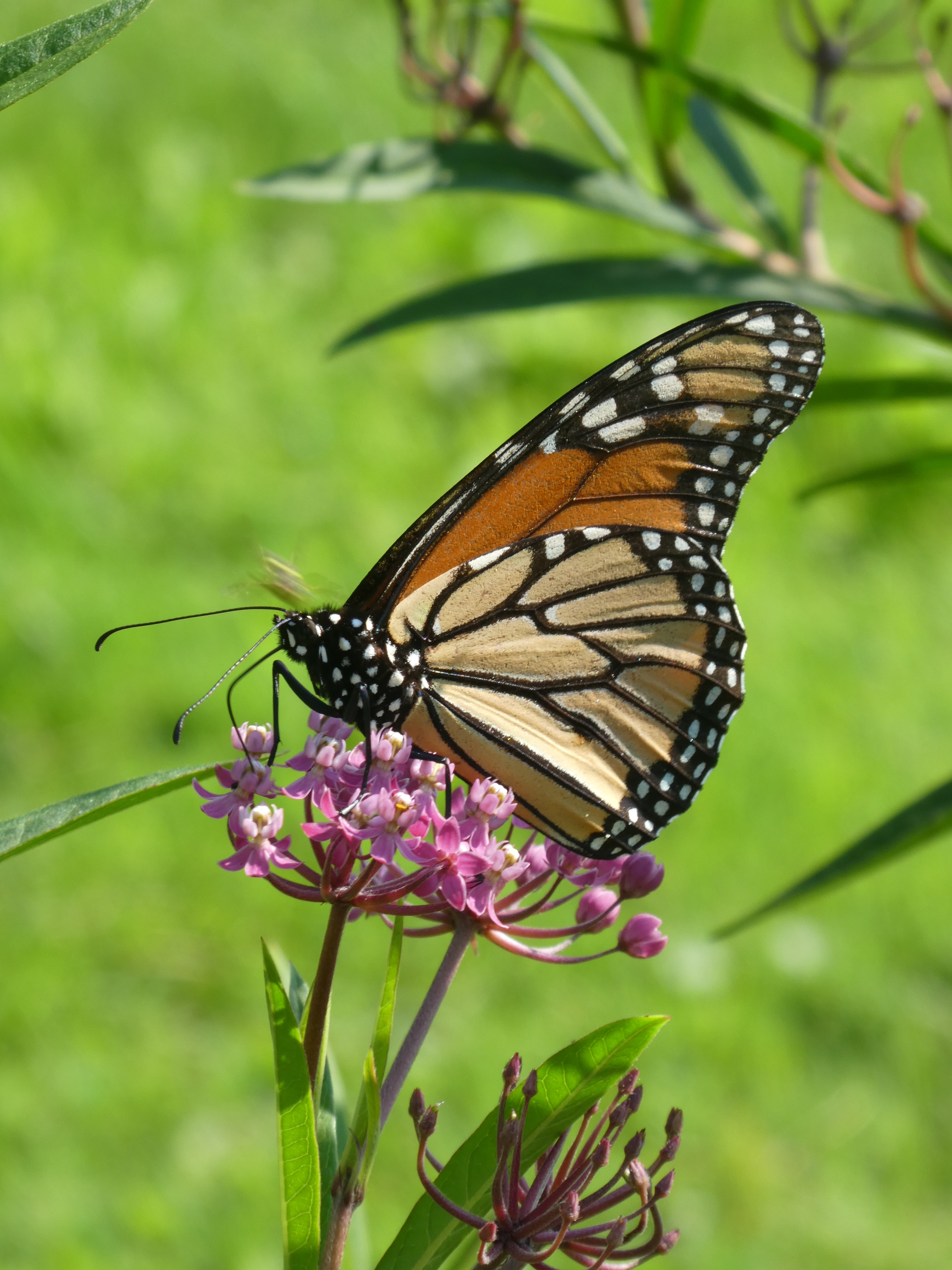
How do lepidoptera use host plants?
Using intergenerational knowledge, adult butterflies and moths seek out specific plants to lay their eggs on to provide nourishment to their larvae once hatched. In many cases, lepidoptera species have co-evolved with particular plants or groups of plants, developing unique adaptations to utilize the nutrients provided by the plant without being harmed by any toxins or other defenses the plants may have. Perhaps the most famous relationship between a butterfly species and its host plant is the example of the monarch butterfly and its dependency on milkweed (Asclepias spp.). The loss or degradation of host plants, whether through habitat destruction, pesticide misuse, or climate change, poses a direct threat to the populations of insects that need these plants for caterpillar development. Without access to their essential host plants, caterpillars cannot grow or mature, leading to a decline in adult butterflies and moths. This decline can then have negative effects on the local ecosystem, including diminished pollination services and breakdowns in food webs. This in turn will affect an ecosystem's resilience to stressors like natural disasters and climate change. As such, by deciding to plant and cultivate host plants, we can provide pollinating lepidoptera the resources they need to survive and preserving biodiversity in our ecosystems.
White lined sphinx moth by Tim King
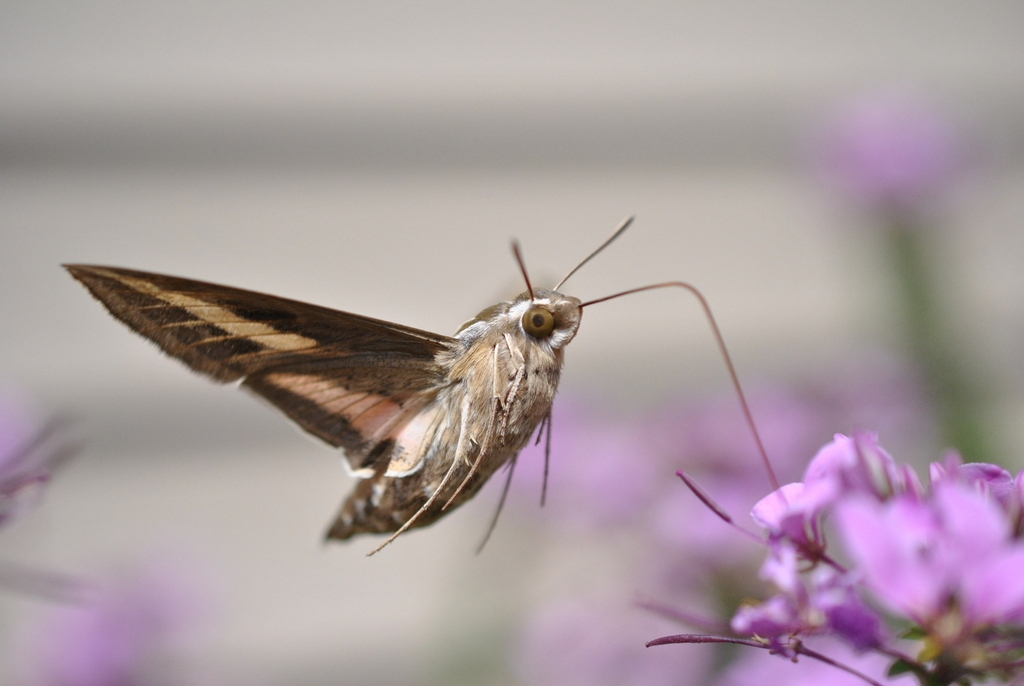
Host plants also play a crucial role in lepidoptera conservation by supporting a wide range of ecological interactions. Many plants provide essential nutrients not only for the caterpillars but also for the adult moths and butterflies as well, either through nectar or other resources. By protecting and restoring host plant populations, conservation efforts can help to maintain these complex interactions that are vital for the health of both insect and plant species. Importantly, host plants are also vital in maintaining local biodiversity, as they support not just the lepidoptera but other wildlife that depend on them as well. Protecting host plant habitats, therefore, benefits not only lepidoptera but entire ecosystems.
Host Plant Garden Card links:
How to use these cards:
By printing and distributing these cards or using them to inform your choices next time you head to the nursery, we can turn our backyards, community gardens, window-boxes, etc. into havens for lepidoptera that support these important pollinators at every stage of their life. Simply put, the plants identified on these cards provide benefits to wildlife and ecosystem lacking in some of the other choices, and by helping to plant these “superplants” and spreading the word, we can help to combat and mitigate the threats posed to moths, butterflies, and other pollinators. There is increasing evidence that our gardens can and must be important respites for pollinators, especially if we live in areas with a distinct history of landscape changes.
Call for Proposals Related to Lepidoptera Conservation
Painted Lady Butterfly by Amber Barnes
Background
Created in 2021, the Lepidoptera Task Force is dedicated to promoting, educating about, and protecting essential moth and butterfly pollinators. There are estimated to be up to 20,000 species of butterflies worldwide. Moths outnumber butterflies by a factor of ten, with almost 190,000 species globally. These fascinating insects providing pollination and ecosystem services of a diverse variety. Although the beauty and complexity of butterflies and moths captures people’s imaginations and encourages actions to help protect them, the importance of lepidoptera as pollinators is underestimated. Unlike many other pollinators, the function that butterflies and moths serve in the ecosystem and their relationship with specific plants and habitat elements change substantially as they transform from larva to adult. We at NAPPC have established a goal to build more knowledge and understanding of the crucial role lepidoptera play in our ecosystems and help to preserve this connection.
The 2026 grant application window is now open!
Application closes January 31st, 2026 at 3:00pm PT
Grant Program Details
The NAPPC Lepidoptera Task Force established a new grant program to support projects related to Lepidoptera conservation in 2022. In 2026, NAPPC is seeking project proposals for research grants only. This small grant aims to support research projects that need some additional support to get off the ground, or projects that are underway but need additional support for completion. The maximum funding request is $5,000. The period of performance will be April. 1, 2026 – March 30, 2027.
Priority Areas
- Research Continuation Grant: Given the 1-year performance period, most likely new research projects will not be able to generate findings; however, funding to complete existing research projects may be suitable. Examples of research topics related to conservation include:
- Lepidoptera reintroductions
- Captive rearing methods
- Plant pollinator preference
- Phenological studies
- Impacts of climate change
- Pesticide toxicity
Grantees are listed below by priority area.
Community Engagement and Education
2025 - The Catawba Grasslands Project: Protecting Lepidoptera Populations with Community Engagement, Grace Rooker, Catawba Lands Conservancy
The main objectives of this project are to educate the public in North Carolina on the critical loss of grassland habitat that many species of butterflies, moths, and other pollinating insects depend on.
2023- Partnering with community gardens to assess the role of heavy metal pollution in butterfly decline, Lauren Agnew, University of Minnesota
This team will work with community garden partners to review results and develop directed strategies for reducing heavy metal exposure in the gardens to further support these valuable urban greenspaces and the butterflies that inhabit them. This research project has two objectives: 1. sample nectar as a potential means of heavy metal bioaccumulation in butterflies, and 2. collect additional butterfly species and relate species’ tolerance to heavy metals to their decline in abundance.
Habitat Implementation
2025 - Lepidoptera Garden Habitat Project, Brevard Discovery Garden, Sally Scalera, University of Florida/Institute of Food and Agricultural Services Extension - Brevard County
This expansion of the Brevard Discovery Garden will attract a greater variety and number of pollinators, including species of Lepidoptera, which provide not only a more stable habitat but also increase the garden’s value as an educational tool.
2024 - Restoring Lepidoptera Resources in Wetland Habitats through Youth Programming, Dan Sandacz, April Vaos, Erika Stergos, and Garnet Miller at the Preservation Foundation in Liberty, IL
The Preservation Foundation will work with the Lake County Forest Preserves District to implement habitat restoration at Greenbelt Forest Preserve.
2023 - Butterfly Garden (Jardín des Papillons), Devon Lang Pryor, Académie Lafayette Public Charter School
This project will restore an existing perennial garden located at Académie Lafayette (AL) Public Charter School’s Oak Street campus in Kansas City, Missouri.
Research Continuation
2025 - Balancing Conservation and Management: The Effects of Herbicide and Prescribed Burns on Native Butterfly Communities, Nina Crawford, University of Wyoming
The primary goal of this project is understanding how to balance invasive plant management with the conservation of butterflies. It also investigates additional areas that have large gaps in knowledge such as Lepidoptera species distributions, plant-pollinator interactions, and butterfly health within the context of herbicide exposure all while prioritizing community engagement and education.
2025 - Assessing the Value of Urban Pollinator Habitats for Moth Larvae in Columbus, Ohio, Addison Copen, The Ohio State University
The objective of this project is to evaluate the efficacy of small urban pollinator gardens to support larval diversity compared to large, well-established urban conservation habitats.
2025 - Backyard monarch habitat: Designing gardens for conservation, Sophia Mucciolo, Pennsylvania State University
This project will the relationship between backyard garden design and monarch survival. It will focus on determining 1) the impact of milkweed species on monarch survival and 2) garden characteristics as drivers of monarch success.
2024 - Investigating Strategic mowing to enhance monarch butterfly oviposition and larval survival rates in CT, Kelsey Fisher, Connecticut Agricultural Experiment Station
This project aims to determine if mowing common milkweed prior to the arrival of monarchs in Connecticut (CT) would encourage new vegetative growth, elongate the plants vegetative stage, and enhance monarch oviposition and larval survival rates.
2024 - Restoration of two populations of Baltimore Checkerspots and expansion of the Nature Museum’s Butterfly Restoration Program, Douglas Taron, Alan Lawrence at The Chicago Academy of Sciences / Peggy Notebaert Nature Museum
The project is part of the Nature Museum’s long-standing Butterfly Restoration Program, and will bring to completion one specific part of that program, the reintroduction of Baltimore Checkerspots at Bluff Spring Fen. Since 2001, this program has worked to release six species of butterflies on four habitat restoration sites in northeastern Illinois.
2023 - Colorado Butterfly Monitoring Network (CBMN), Shiran Hershcovich, Butterfly Pavilion
Funds were awarded to help continue the operations of the Colorado Butterfly Monitoring Network a community science project led by Colorado Butterfly Pavilion that harnesses the power of volunteers to monitor lepidopteran populations in the state. CBMN has become one of the nation’s fastest growing volunteer butterfly monitoring programs, and collects and reports data on long-term monitoring of butterfly species distribution, composition and abundance in correlation with ecological and climatic conditions in the state of Colorado.
Lepidoptera ID Guide
Lights Out for Lepidoptera
-
Dark Skies, Bright Futures: Why Moths Matter in the Fight Against Light Pollution
When we think about pollinators, butterflies basking in the sunshine or honey bees humming from bloom to bloom often come to mind. But there's a hidden world of unseen, unsung, but absolutely essential pollinators working the night shift: the moths! These diverse and adaptable creatures are vitally important to plant reproduction across ecosystems. Read the full article.
- Firstly, assess outdoor lighting at your home or apartment and do your best to turn off any unnecessary lights. Shading your windows at night is also a good idea.
- Moths are considered to be more attracted to higher-frequency lights (generally with more UV output), so if you must use outdoor lighting at night for safety purposes, try to install low-voltage lights (such as sodium-vapor bulbs) and motion detectors.
- LED lighting, though more energy efficient, is ironically more disruptive to moths than other options. If you are going to install LED lights, try to choose bulbs that emit warmer wavelengths instead of “daylight” bulbs.
- Plant for diurnal and nocturnal pollinators alike! As we know, moths tend to prefer fragrant flowers that are white or pale in coloration. Making sure to always lean towards plants that are native and non-invasive, try planting flowers like sacred Datura (Datura wrightii), morning glory (Convolvulus spp.), and common evening primrose (Oenothera biennis) to attract moths and provide them food and nectar sources. Reference our eco-regional planting guides for more ideas for pollinator-friendly plants.
- Reduce or eliminate the use of pesticides whenever possible and say no to bug zappers!
White-lined Sphinx - Photographed by Rick Welton
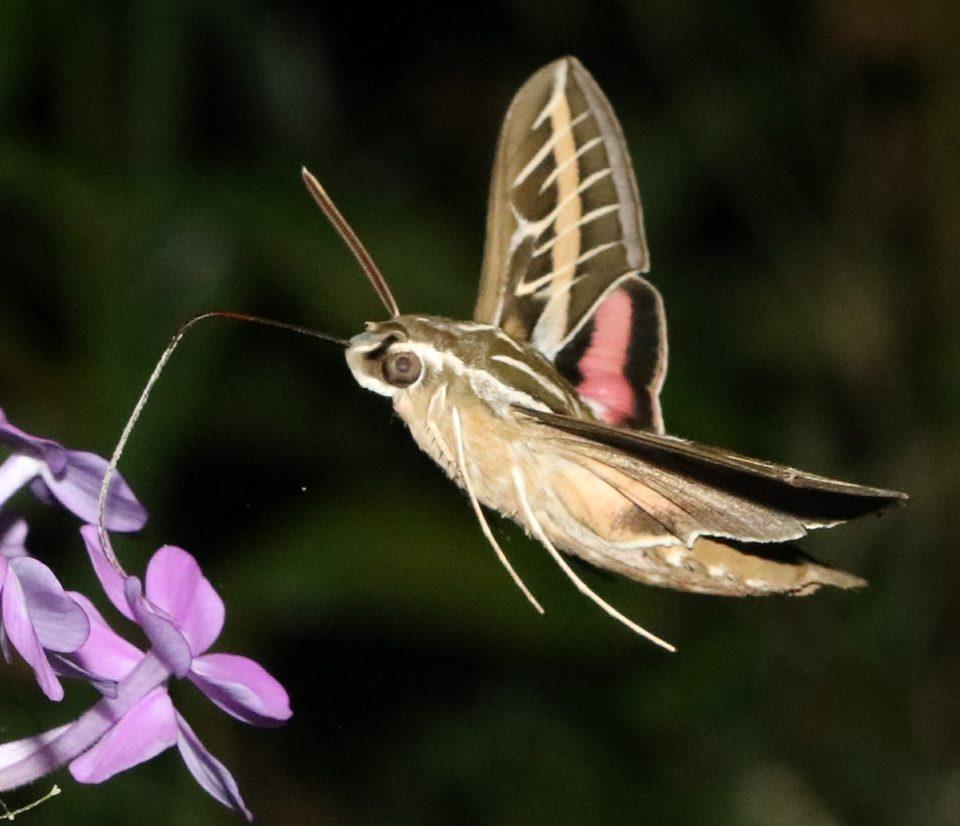
Light pollution is a spillover effect from urbanization and poses several threats to nocturnal animals that have evolved to rely on the cover of darkness for nourishment, protection, and/or reproduction. Light pollution is a relatively recent phenomenon and animals have not had adequate time to adapt to this new reality, leading to disruptions in their life cycles that can have deadly consequences. For example, migratory birds that depend on navigational clues from the stars and the Moon have been recorded as being disoriented from the glow from artificial light, causing them to crash into buildings or fly in circles until they falter from exhaustion. The effects of artificial light are negatively affecting nocturnal reptiles, mammals, and insects in a similar fashion, leading to disruptions in food chains and ecosystem functionality. Luckily, there are actions we can take as individuals to decrease our own output of artificial light, and we inspire others, including city officials, building managers, and homeowners associations to do the same.
Kidney-spotted or Bristly Cutworm - Photographed by Jeanette Jaskula
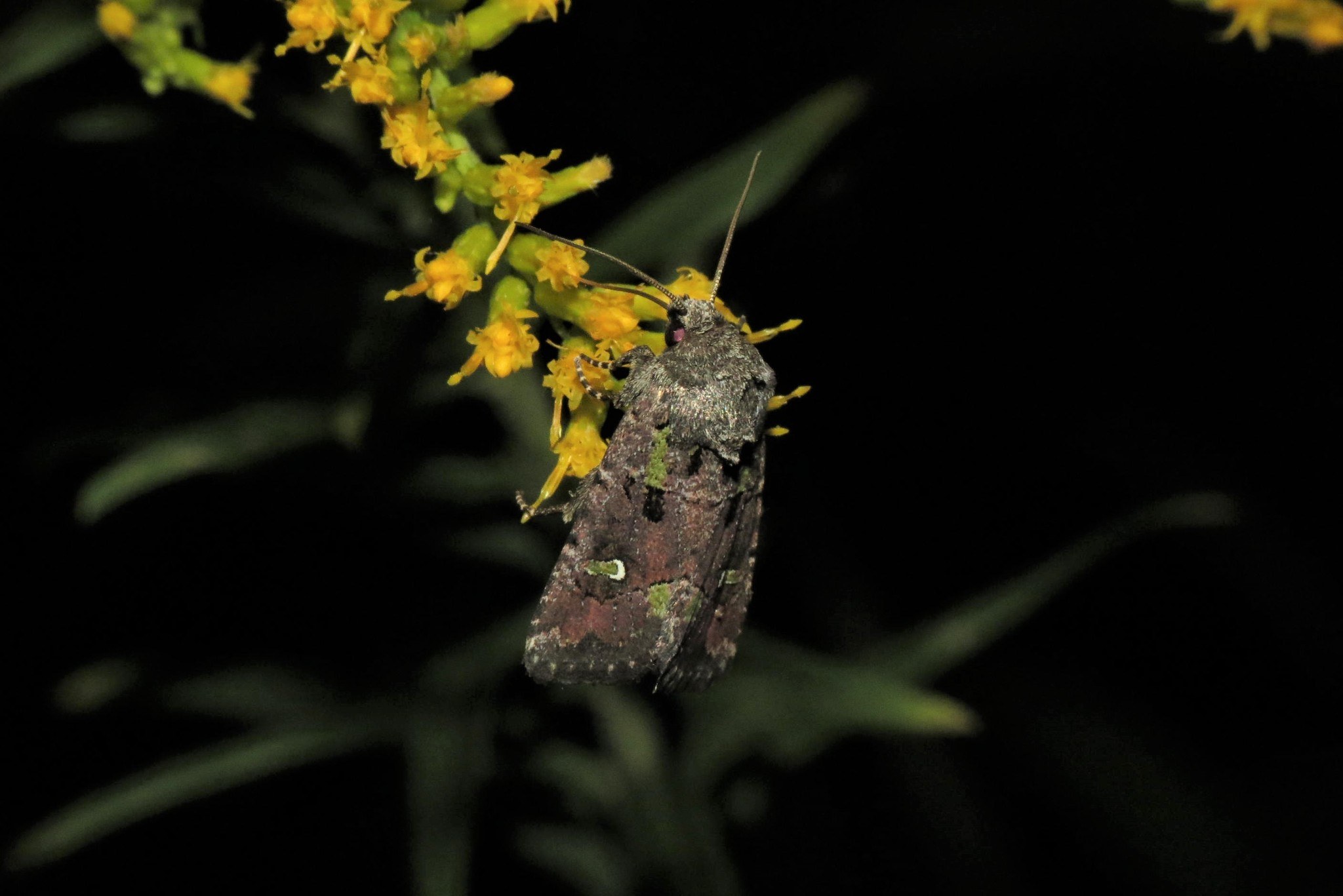
Nocturnal Pollination - Pollination, the natural mechanism through which plants reproduce, occurs at all hours of the day. While much of the research has been focused on pollinators that are active during the day (diurnal), critical pollination services are provided by nocturnal animals such as bats, bees, beetles, and most importantly, moths. While moth pollination has been less studied than bee pollination, research completed in the last few decades indicates that moth pollination is incredibly important to functioning ecosystems across the globe and that moths might even be more efficient pollinators than bees. As is the case with other pollinators, moths coevolved along with certain flowering plants, and both maintain certain characteristics that attract one another. For example, plants have evolved to take advantage of the keen sense of smell moths possess and produce especially fragrant flowers that open at night. Also, white or pale blooming flowers are more likely to attract moths because they are easier to see at night. These characteristics help us identify which plant species attract moths, although some plants are pollinated both during the day and at night. Certain species of moths and plants have evolved to become codependent on one another, as is the case with the famous relationship between the yucca plant and the yucca moth, which is the yucca flower’s only pollinator. Moths are also recorded as traveling further distances than bees to find nutrients, leading researchers to believe that moths are an important player in maintaining genetic diversity across an ecosystem.
Carolina Sphinx - Photographed by Brian Lowry
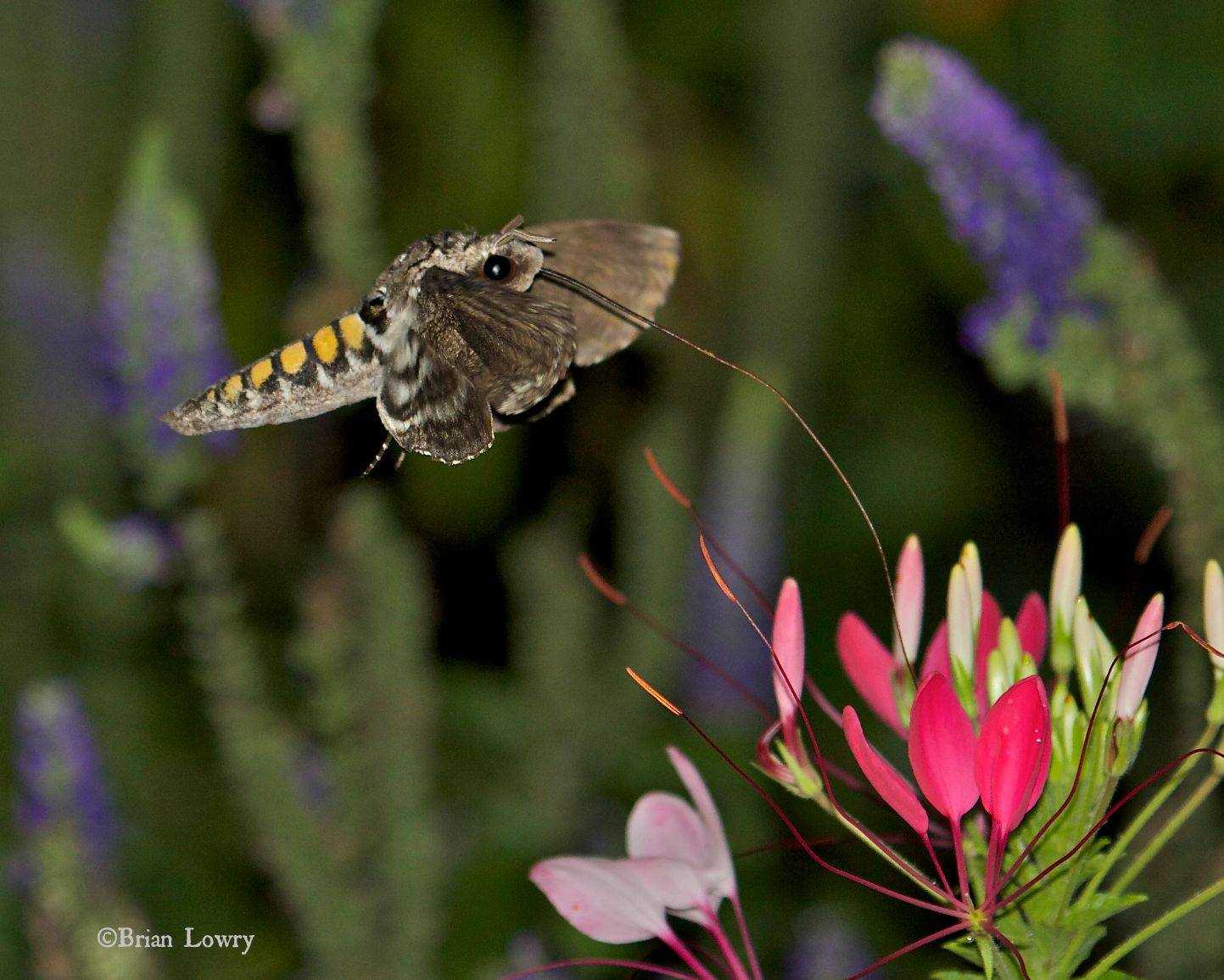
How artificial light hurts pollinators - Like other pollinators, moths are negatively affected by habitat loss, overuse of pesticides, encroachment from invasive species, and climate change. However, moths are most at risk from the effects of light pollution, as most moth species are nocturnal and use the benefit of darkness to feed, mate, and avoid predation. Moths also use distant natural lights, such as the Moon and stars to navigate. Light pollution disorients and confuses moths, causing them to pollinate less efficiently and exhibit the phenomenon known as “flight to light” where moths will fly towards or circle the artificial light source and eventually land. These moths are then easy prey for predators, such as birds, that have learned that certain lights attract moths in large numbers. Additionally, contact with hot surfaces from artificial lighting can kill or injure moths. Light pollution can also inhibit the mating and reproductive process in nocturnal Lepidoptera and has been shown to have negative effects on moth larvae as well. These negative effects from light pollution have serious repercussions for ecosystem functionality and imperil certain moth species along with the plants they visit and pollinate. Without these specialist pollinators, ecosystems lose biodiversity and functionality and are less resilient to other threats like climate change and invasive species.
Hermit Sphinx - Photographed by Dean Smith
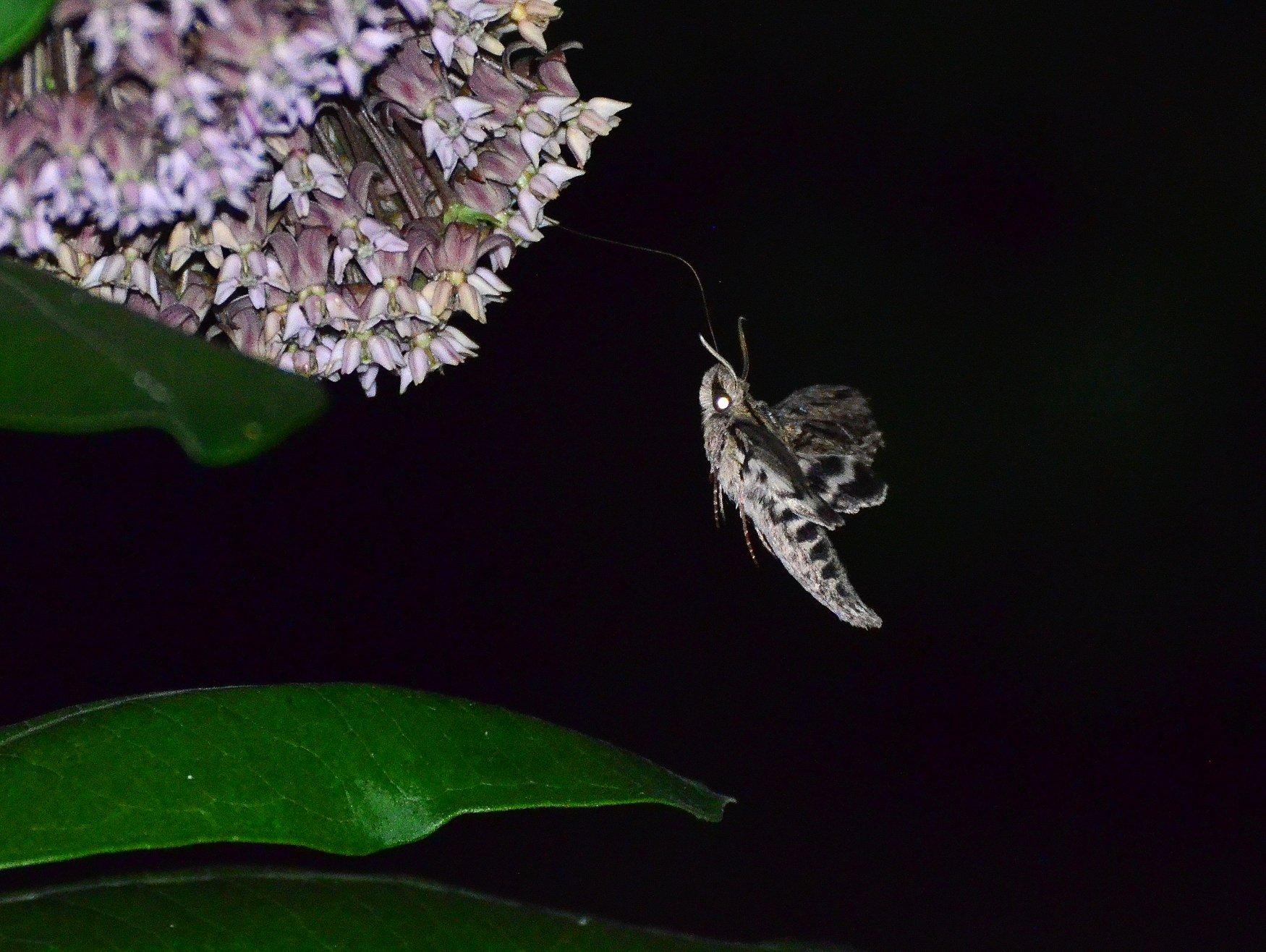
How you can help
Despite the threats that light pollution poses to moths and their role in maintaining our ecosystems, there are several ways we can advocate for moths in our individual capacities.
Sources:
https://www.nps.gov/articles/nocturnal_earthnight.htm
https://www.darksky.org/light-pollution/wildlife/
https://www.fs.usda.gov/wildflowers/pollinators/animals/moths.shtml
https://xerces.org/blog/the-night-shift-moths-as-nocturnal-pollinators
https://news.fiu.edu/2021/its-lights-out-for-moths,-if-you-like-your-nightly-pollinators
https://resjournals.onlinelibrary.wiley.com/doi/10.1111/een.12174

